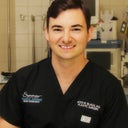Posted underBreast Reduction q&a
One month post-op, my incision is getting bigger, is this a concern? (Photo)
I had a breast reduction Nov. 21, was healing great until about two weeks ago when a small hole appeared my left breast. I called my surgeon the next day and they said everything I described as normal, just drainage, but it’s been two weeks now and the hole appears bigger! It’s draining yellow pus, no foul odor, and I’m not experiencing any sickness so I don’t think I have an infection, I’m just concerned with how it is healing. Should I schedule an appt?
Answers (5)
From board-certified doctors and trusted medical professionals
Dr. Ahmed Abd EL Gawad, MD, FEBOPRAS, FRCS(Plast)
Specialist Registered Plastic Surgeon
Answer
More Breast Reduction Questions
See all Breast Reduction Q&AWE SEND PRETTY
EMAILS
What’s trending? Who’s turning heads? Which TikTok myths need busting? We’ve got you. No fluff, no gatekeeping—just real talk. Get our free, unfiltered newsletter.


